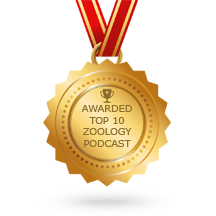Browsing the "Cretaceous" Category
The Cretaceous period is a division of earth’s history spanning from around 145 to 66 million years ago, and during which enormous deposits of Chalk were formed across Europe. The Cretaceous was a warm period with temperatures on average 4°C above present. Sea levels gradually rose through the Cretaceous; attaining a maximum of around 200 meters above the present level, and resulting in the formation of shallow seas as large areas of the continents became flooded. During the Cretaceous the supercontinents of Laurasia and Gondwana continued to break up; opening the Indian and Atlantic Oceans. In the oceans, teleosts, a major group of bony fish, began to flourish along with modern sharks and rays. Diatoms, a group of planktonic algae, also began to diversify. On land the first true mammals and birds evolved while dinosaurs remained dominant. A major floral revolution took place during the Cretaceous with the emergence and gradual diversification of flowering plants. The end of the Cretaceous is marked by one of the most catastrophic extinctions in earth’s history. Dinosaurs, pterosaurs, ammonites, belemnites, rudist bivalves and many groups of marine reptiles were among those wiped out. An Iridium rich layer found globally at the Cretaceous/Paleogene boundary, along with a vast impact crater in Mexico, lead many to believe that a meteor was responsible for the end Cretaceous extinction. However, massive volcanism in India, contemporaneous with the extinction, may also have been a contributing factor.

Published on June 3rd, 2016 | by David Marshall
“Saurian is a video game focused on providing the most captivating prehistoric experience ever developed for commercial gaming: living like a true dinosaur in a dynamic open world through intense, survival based gameplay. Players will have [&hellip... Read More →

Published on June 2nd, 2016 | by Caitlin Colleary
The Southeastern Association of Vertebrate Paleontology (SeAVP) conference took place on May 16 at the Virginia Museum of Natural History (VMNH) in Martinsville, VA. The conference included students and faculty from nearly a dozen institutions from [&hellip... Read More →

Published on April 21st, 2016 | by Liz Martin-Silverstone
The extinction of non-avian dinosaurs at the end of the Cretaceous has always been a discussion favourite amongst vertebrate palaeontologists. The traditional view has been that a meteor hit the earth near modern day Mexico (the [&hellip... Read More →

Published on March 16th, 2016 | by Caitlin Colleary
Dr. Larry Witmer’s lab at Ohio University studies the anatomy of modern animals to make interpretations regarding the functional morphology of extinct vertebrates. WitmerLab incorporates anatomical studies with cutting-edge technology, allowing for the reconstructions of soft-tissue [&hellip... Read More →

Published on January 18th, 2016 | by Liz Martin-Silverstone
Juvenile dinosaurs are less common than adults, and typically not as well preserved due to the fact that their bones are often not fully formed (many of them are still cartilaginous) or fused (sutures are still [&hellip... Read More →

Published on January 1st, 2016 | by Liz Martin-Silverstone
The Wealden Supergroup of southern England is known for it’s Cretaceous fossils, particularly of dinosaurs, but also crocodilians, pterosaurs, lizards, invertebrates, and plants. The group represents the Lower Cretaceous, and is well known for showing us the [&hellip... Read More →

Published on November 17th, 2015 | by David Marshall
A new fossil from Lebanon is named today in BMC Evolutionary Biology as Rollinschaeta myoplena. We spoke to lead author Luke Parry about this interesting fossil and its unusual namesake. “Due to their soft bodies polychaete annelids (the marine relatives [&hellip... Read More →

Published on November 15th, 2015 | by Liz Martin-Silverstone
Pterosaurs were the first vertebrates to achieve powered flight, and lived in the skies above the dinosaurs during the Mesozoic. They’re often mistakenly identified as dinosaurs, but are in fact a separate, closely related group. This [&hellip... Read More →

Published on November 2nd, 2015 | by Liz Martin-Silverstone
For some time now, we’ve known that most (if not all) theropod dinosaurs were feathered, but we’re still filling in the blanks of feather colouration, types of feathers, and how the feathers were distributed on the [&hellip... Read More →

Published on October 15th, 2015 | by Liz Martin-Silverstone
Ankylosaurs are a group of non-avian dinosaurs best known for their armour, tank-like bodies, and sometimes large tail clubs. First appearing in the Jurassic, they were common in Late Cretaceous ecosystems, with several species known from [&hellip... Read More →























